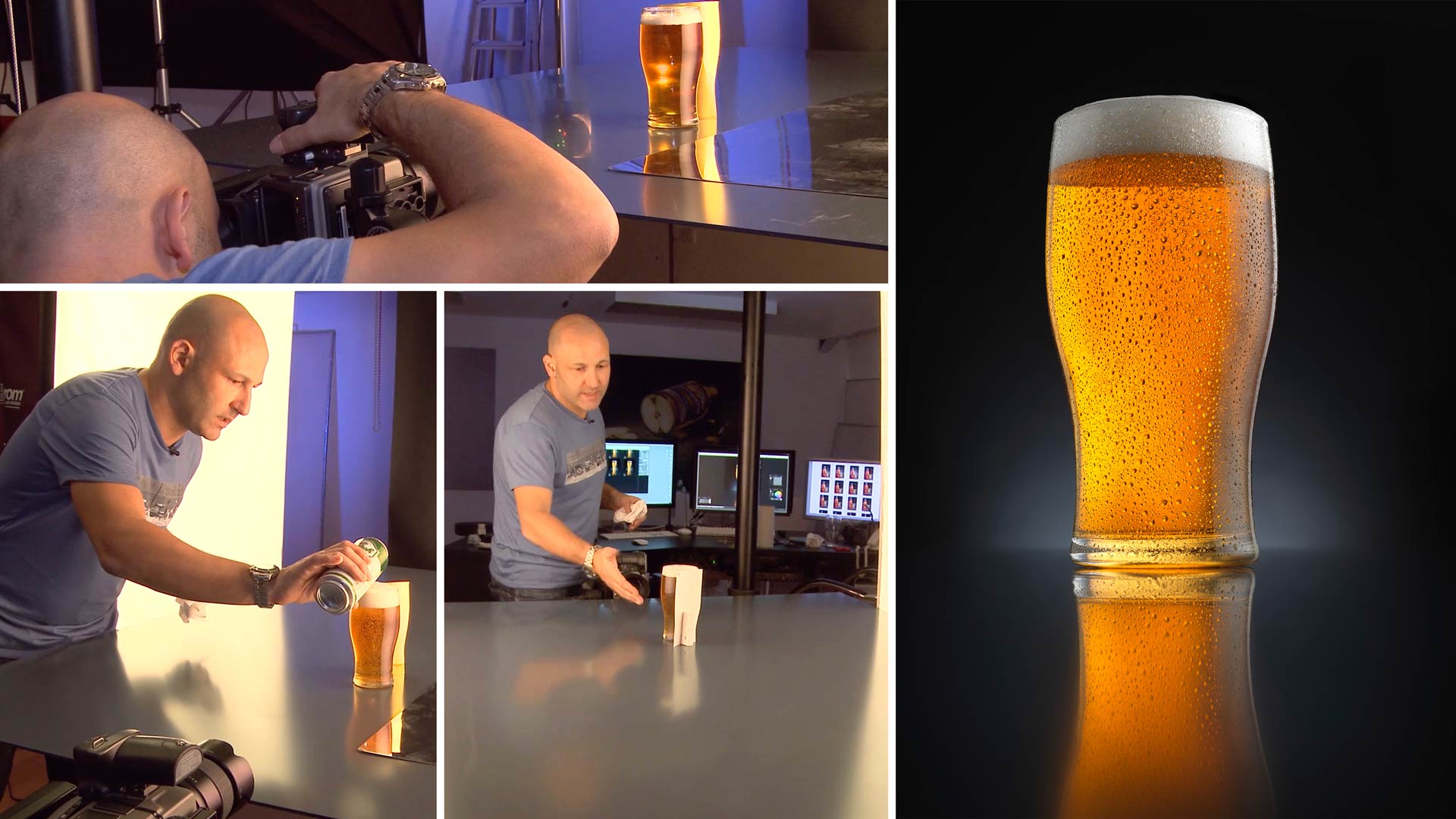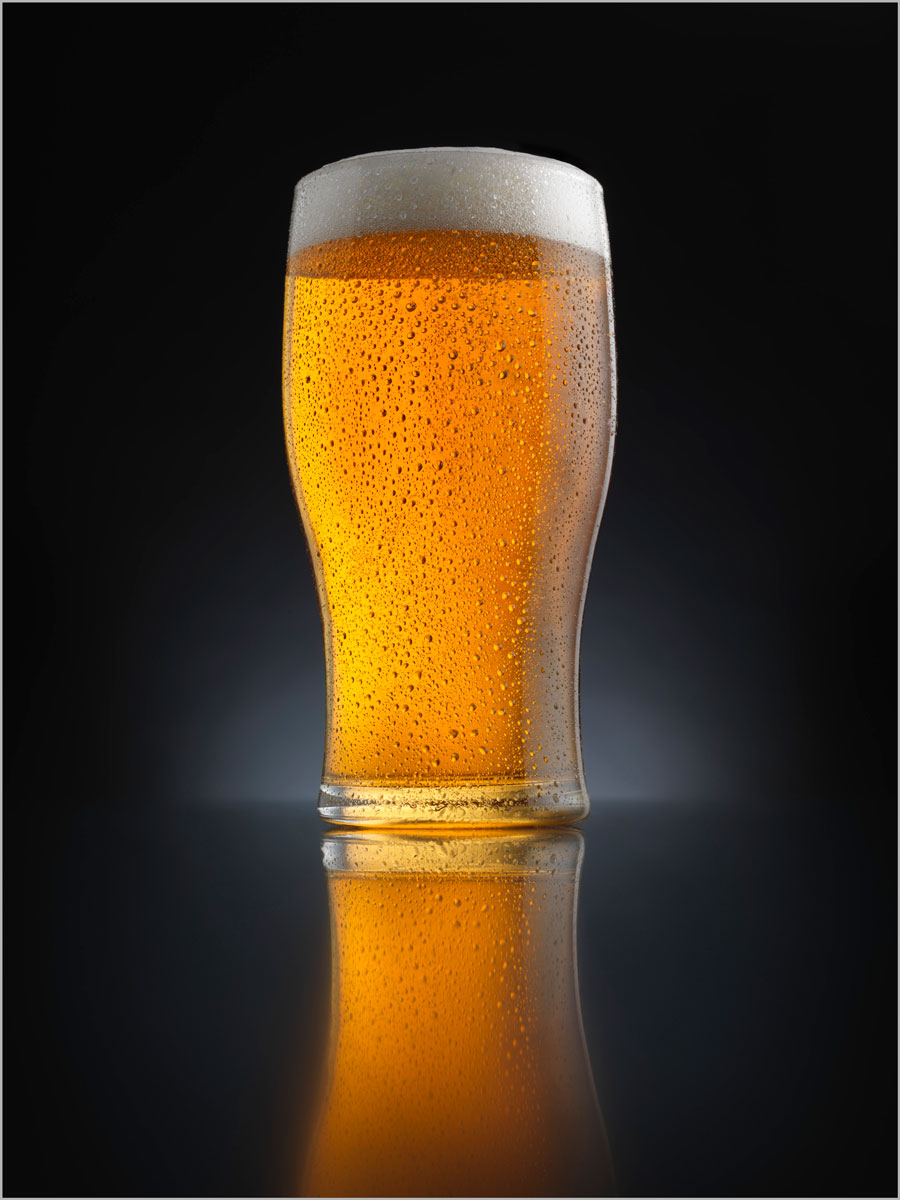The Perfect Pint Condensation Cold Look
How do professional drinks photographers make beer look so good? All is revealed in this step-by-step class.
How do you light, craft and shoot the image? How do you get the condensation droplets right? What tricks can you use to make the liquid glow? Find all the answers other pros won’t share.
As Karl demonstrates how to prepare the product and light the shot, you’ll pick up a variety of tips and techniques to enhance your own bottle and beverage photography. Cheers!
In this class:
- How to photograph bottles and glasses
- Creating perfect condensation for bottle photography
- Lighting setups for reflective items
- How to control reflections on glass
- Creating gradient lighting
- Using colour checker cards to ensure colour accurate images
To learn about the retouching techniques involved in this shot, check out The Perfect Pint: Post-Production.
If you enjoy this class, try Whisky Product Shoot and Whisky Photography.
Questions? Please post them in the comments section below.
© Karl Taylor



Comments
Where can you purchase this ?
Hi Mark, usually in the baking section of a supermarket.
Hi Karl,
Is there any section throughout the programme where you explain a little bit more in detail what you are actually doing in this tutorial at the moment 11.00 and onwards, when you are taking the precise white balance?
Hi Bogdan we are planning a video on this but in the meantime you might find this chapter useful. https://visualeducation.com/course_video_page/lighting-and-colour-balance/
Hi, Carle, I’d like to know what’s the name of the spray paint you use? I also want to know the sign of the glucose?
Hi Please see the equipment list on the lower right side of the page.
Sorry of which page is the list of equipment please?
Hi Karl, thank you for sharing this solution but I can’t find the liquid for the fake droplet from local market. What is product name on the label ?
tks and happy new year.
Hi Karl, no your answer is great! Just wanted to see if you were aware of any laws that I wasn’t privy to, in which I could be sued for doing so whilst being completely unaware. Lol. Thanks for replying!
Hi Karl, new to the channel and loving it! Great work all-round. Quick question for you, what are the legalities of taking product shots (with branding) and putting them up on your site or in your portfolio? Do you need to obscure the branding? For example, if you have a Jack Daniel’s whiskey bottle, are you safe if you have it angled to the side with part of the branding showing, or do you need to remove it completely from the shot? Thanks, Karl. Kyle
Hi Kyle, this is a common question and there is no firm answer i’m afraid. Some brands will allow photographers who produce good work to shoot their brands and publish as long as it is not detrimental to their brand as it’s just extra publicity but other brands may not like the work and could request it be removed. But lots of photographers do shoot brands for test shots and portfolio work so it’s really up to you to decide. Sorry I can’t be more specific on this one.
Hi Karl, brilliant video as usual. I actually have this one on your advertising photography DVD, but still great to see again, in fact this is probably the 10th time I have watched it 🙂
You use a five light setup on this shoot. If you only had 4 lights, which one would you lose, and why please?
Thanks
Kev
Hi Kevin, thanks for your business over the years and I’m sure you are going to enjoy a lot of the new stuff here on KTE. Have you checked out the first 15 theoretical chapters on LightSource in the portrait section, these are going down really well even with those interested in the product photography stuff. We have loot of new stuff coming soon as well as the live shows too. In answer to your question then I think could loose the overhead fill light and replace with some white foam board over the top of the softboxes if necessary. Cheers Karl.
Hi Karl
What could you recommend for software to use with the colour checker for Canon shooters ( as opposed to Hasselblad’s “Phocus” software?
Hi Alan, You can use Lightroom or Capture One. Both of these software have the ability to measure colour values and neutralise.
Hi, Karl Taylor when you apply the varnish on the glass how long do you wait before mixing and putting the liquid glucose ?
you should wait about half an hour before applying.
as you said it will harden after being dry. is it removable after it gets dry. I don’t want my mom after me for ruining the glass 🙂
Hi Raman, yes it washes off with warm water.
Karl… I am new here.
I notice on a number of the Product Shot videos I have reviewed so far, that with your Hasselblad you seem to use a faster shutter speed (say 1/350 o 1/500) than what the sync speeds are on say a Canon DSLR.
If I am trying to shoot similar shots with a Canon 5D MkIV with a flash sync-speed limitation of 1/200 sec. how would those shots differ? Maybe in not being able to freeze action of bubbles rising in liquid as well? Any other downsides other than final resolution?
Awesome videos BTW – as addictive as Game of Thrones!
Hi John, the shutter sync speed has no bearing on ‘freezing’ stuff as that is done by the flash. The only thing you need to worry about with the sync speed is that it is fast enough to cut out the ‘modelling’ lamps or ambient light. You will learn more on this in the course ‘Light Source’ in the portrait section. Cheers Karl.
Thanks! Portrait Section is next on my list!
I’ll check Ben which varnish we use and come back to you soon.
Hi, I just noticed i had put it wrong, i meant oil based or water based.. ..
the one we have doesn’t specify whether its water based or solvent free, it says ‘Artists Clear Picture Varnish – For Oil Colour’ the make of ours is Daler – Rowney in a spray bottle but I’m sure any clear artists varnish for oil would work in the same way, hope this helps
Hi Karl, im know doing an amazon order for bits to have a try at this, the artists varnish do you use water based or solvent free?
Thanks
Ben
Hi Karl, will glycerine and water mix + the varnish give the same results? thats’ currently what I use, but doesn’t harden as you mentioned with glucose. Regarding the shot, i’d like to see a more cylindrical shape as the final results but the drops and condensation looks great. Thanks!
Hi Matteo, no this mix is much better, glycerin doesn’t really do the job, I only use that in food photography.